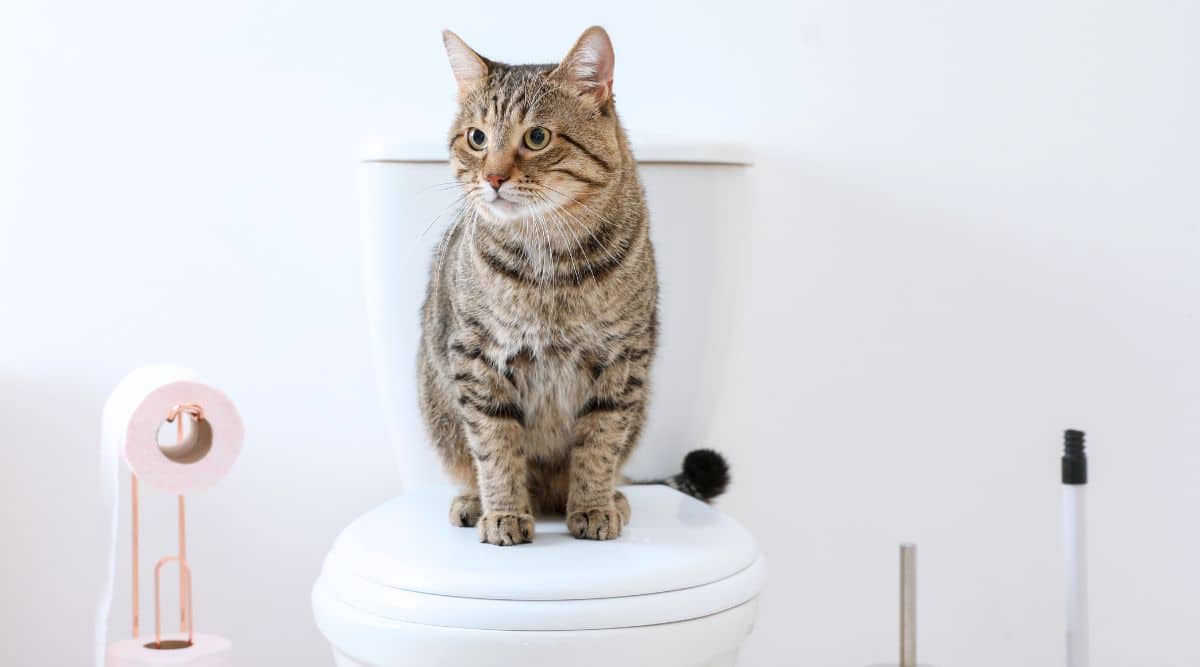Don't Flush Cat Poop Down Your Toilet - Maintain Your Home's Pipe System
Don't Flush Cat Poop Down Your Toilet - Maintain Your Home's Pipe System
Blog Article
We've found this article relating to How to Dispose of Cat Poop and Litter Without Plastic Bags directly below on the net and decided it made good sense to relate it with you on my blog.

Introduction
As pet cat proprietors, it's important to be mindful of how we throw away our feline good friends' waste. While it may seem hassle-free to flush pet cat poop down the bathroom, this practice can have damaging effects for both the environment and human wellness.
Environmental Impact
Purging cat poop presents hazardous virus and parasites right into the water system, posing a considerable danger to marine communities. These impurities can negatively influence marine life and concession water top quality.
Health Risks
Along with ecological issues, flushing feline waste can additionally pose health and wellness threats to humans. Feline feces may contain Toxoplasma gondii, a parasite that can trigger toxoplasmosis-- a possibly extreme ailment, particularly for expecting females and people with weakened immune systems.
Alternatives to Flushing
Luckily, there are more secure and more responsible methods to take care of pet cat poop. Take into consideration the following alternatives:
1. Scoop and Dispose in Trash
The most typical approach of disposing of cat poop is to scoop it into a naturally degradable bag and throw it in the trash. Make certain to utilize a dedicated trash inside story and take care of the waste promptly.
2. Use Biodegradable Litter
Choose biodegradable feline clutter made from products such as corn or wheat. These clutters are environmentally friendly and can be safely dealt with in the trash.
3. Bury in the Yard
If you have a yard, take into consideration hiding cat waste in a marked location away from veggie yards and water resources. Make certain to dig deep adequate to prevent contamination of groundwater.
4. Install a Pet Waste Disposal System
Invest in a family pet waste disposal system especially made for pet cat waste. These systems use enzymes to break down the waste, reducing smell and ecological effect.
Conclusion
Accountable pet ownership extends beyond offering food and sanctuary-- it additionally includes appropriate waste administration. By avoiding flushing cat poop down the commode and opting for different disposal approaches, we can reduce our environmental impact and safeguard human health.
Why Can’t I Flush Cat Poop?
It Spreads a Parasite
Cats are frequently infected with a parasite called toxoplasma gondii. The parasite causes an infection called toxoplasmosis. It is usually harmless to cats. The parasite only uses cat poop as a host for its eggs. Otherwise, the cat’s immune system usually keeps the infection at low enough levels to maintain its own health. But it does not stop the develop of eggs. These eggs are tiny and surprisingly tough. They may survive for a year before they begin to grow. But that’s the problem.
Our wastewater system is not designed to deal with toxoplasmosis eggs. Instead, most eggs will flush from your toilet into sewers and wastewater management plants. After the sewage is treated for many other harmful things in it, it is typically released into local rivers, lakes, or oceans. Here, the toxoplasmosis eggs can find new hosts, including starfish, crabs, otters, and many other wildlife. For many, this is a significant risk to their health. Toxoplasmosis can also end up infecting water sources that are important for agriculture, which means our deer, pigs, and sheep can get infected too.
Is There Risk to Humans?
There can be a risk to human life from flushing cat poop down the toilet. If you do so, the parasites from your cat’s poop can end up in shellfish, game animals, or livestock. If this meat is then served raw or undercooked, the people who eat it can get sick.
In fact, according to the CDC, 40 million people in the United States are infected with toxoplasma gondii. They get it from exposure to infected seafood, or from some kind of cat poop contamination, like drinking from a stream that is contaminated or touching anything that has come into contact with cat poop. That includes just cleaning a cat litter box.
Most people who get infected with these parasites will not develop any symptoms. However, for pregnant women or for those with compromised immune systems, the parasite can cause severe health problems.
How to Handle Cat Poop
The best way to handle cat poop is actually to clean the box more often. The eggs that the parasite sheds will not become active until one to five days after the cat poops. That means that if you clean daily, you’re much less likely to come into direct contact with infectious eggs.
That said, always dispose of cat poop in the garbage and not down the toilet. Wash your hands before and after you clean the litter box, and bring the bag of poop right outside to your garbage bins.
https://trenchlesssolutionsusa.com/why-cant-i-flush-cat-poop/

Hopefully you enjoyed our piece about Don’t flush cat feces down the toilet. Thanks a ton for taking a few minutes to browse our article post. If you enjoyed our page if you please don't forget to share it. Thank you for taking the time to read it.
Schedule Services Report this page